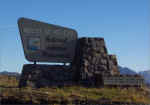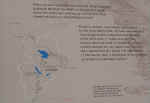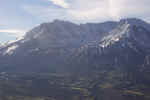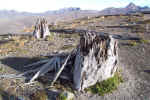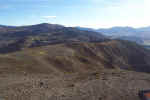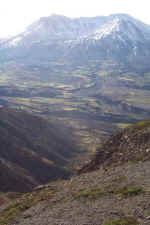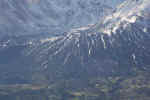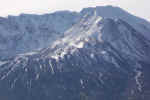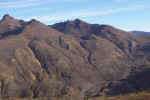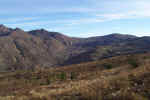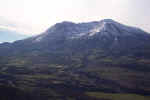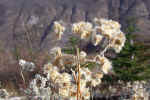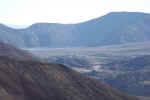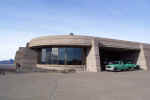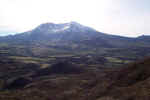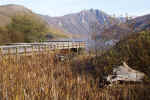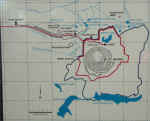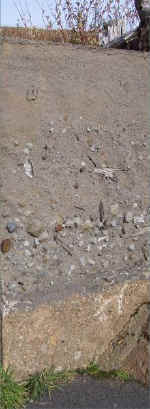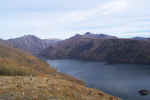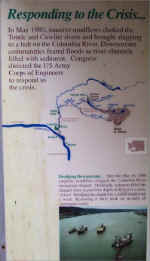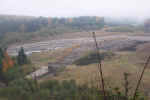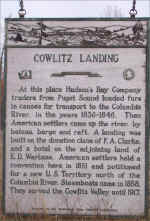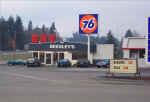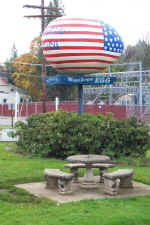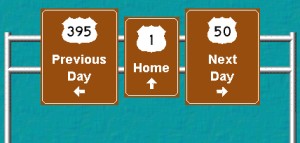Entrance to the monument.
Mount St. Helens, north view.
Panel describing the blast.
Debris avalanche information.
Close look at the crater, with the lava dome visible in the middle.
Looking east, the peak of Mount Adams is visible in the distance.
Trees were broken apart by the lateral blast!
Johnston Ridge, visible in the foreground, had water and mud flow over it during the eruption.
Another look at the mountain and valley where the landslide settled.
Lava dome clearly visible in the top center of the picture.
This view is slightly right of the previous one, showing the dome, as well as the west peak.
Looking northwest from the Johnston Ridge area, the access road can bee seen running along the area cleared by the blast.
From Johnston Ridge. It is difficult to capture in pictures the incredibly huge area affected by the eruption.
This memorial is dedicated to those who lost their lives in May 1980. Sixty people were killed by the mountain's eruption.
Me in front of the mountain. This is the area where volcanologist David Johnston was doing research in March 1980 when the volcano erupted. He was killed, and the ridge, as well as the observatory built here, was named for him.
Another view with the access road visible.
This panel describes landmarks of the mountain. The picture in the next frame shows the items marked on this panel.
See previous description.
Plant life returning to the area.
Spirit Lake is visible in the left center of the picture. The ridge seen in the upper right is the location of the Windy Ridge Overlook, where I stood yesterday.
The observatory at Johnston Ridge.
One final look before heading out.
A different angle from the west.
Coldwater Lake, created when the landslide block drainage in this area.
The park was celebrating Native American month. At the Coldwater Ridge Visitor Center, a drum circle was making a presentation, with Mount St. Helens in the background.
At the visitor center, a plaque listed those that died during the eruption, and where they were at the time. I took this picture to show how they displayed the information, and also that someone from Canton Ohio, my original hometown, was listed here.
This map was included with the list in the picture to the left. It was amazing to see the distances that the death blow was able to reach.
A trail at Coldwater Ridge had this display of a cut in the ground to show the layers of the soil deposits.
Another descriptive panel on the devastation on Coldwater Ridge.
Another view of Coldwater Lake.
The Coldwater Ridge Visitor Center.
Further west, a turnoff is available to view the sediment dam.
A view of the dam.
The Mount St. Helens Visitor Center. Great displays were available here, as well as coldwater.
As I continued my drive towards the northwest, I passed by this area and stopped to read this informational sign.
To the north of Cowlitz Landing was Mrs. Beesley's Restaurant!
In Winlock, not only did this little park display the world's largest egg...
...But also informed the public about the world champion women log rollers.
One final town descriptive panel.
